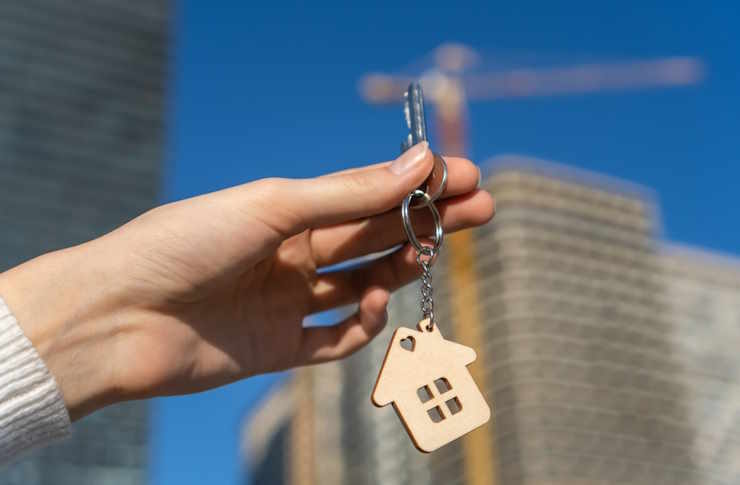Unlock the Potential of Abandoned Houses — Start Your Journey Today
Abandoned houses have become a growing phenomenon in many communities, often seen as eyesores or potential safety hazards. However, these forgotten properties can also represent unique opportunities for savvy investors and aspiring homeowners. This article will explore the world of abandoned houses, their potential, and how you can embark on a journey to transform these neglected structures into valuable assets.

What exactly are abandoned houses?
Abandoned houses are residential properties that have been left unoccupied and unmaintained for an extended period. These structures can range from dilapidated urban dwellings to rural farmhouses that have fallen into disrepair. The reasons for abandonment vary widely, including financial difficulties, family disputes, or simply relocation without selling the property. In Ireland, abandoned houses are often referred to as “derelict properties” and can be found in both rural and urban areas across the country.
Why are abandoned houses becoming more common?
The prevalence of abandoned houses has increased in recent years due to various factors. Economic downturns, such as the 2008 financial crisis, left many homeowners unable to afford their mortgages, resulting in foreclosures and abandoned properties. In rural areas, population shifts towards urban centers have led to the abandonment of older homes. Additionally, complex inheritance issues or absentee owners can result in properties falling into disrepair and eventual abandonment.
What are the potential benefits of investing in abandoned houses?
Investing in abandoned houses can offer several advantages for those willing to take on the challenge. Firstly, these properties are often available at significantly lower prices compared to traditional real estate offerings. This lower entry point can make real estate investment more accessible to a broader range of people. Secondly, renovating abandoned houses contributes to community revitalization, potentially increasing property values in the surrounding area. Lastly, successful restoration projects can yield substantial profits through resale or rental income.
How can you find and acquire abandoned houses?
Locating abandoned houses requires a combination of research and legwork. Start by exploring online resources such as government property databases, real estate websites, and local auction listings. Driving through neighborhoods and networking with local real estate agents can also help identify potential properties. In Ireland, the Vacant Homes website (vacanthomes.ie) provides a platform for reporting and finding vacant properties across the country.
Once you’ve identified a property, the acquisition process involves determining ownership, which may require a title search. Contact the owner directly or work with local authorities if the property has been seized for tax delinquency. Be prepared for potential legal complexities, especially if the ownership is unclear or disputed.
What unique challenges does Ireland face with abandoned houses?
In Ireland, abandoned houses present both challenges and opportunities. The country has experienced a significant housing shortage in recent years, particularly in urban areas. At the same time, rural depopulation has left many countryside homes vacant. The Irish government has implemented initiatives to address this issue, such as the Repair and Leasing Scheme, which provides funding to property owners to renovate vacant properties for social housing use.
Additionally, Ireland’s rich historical heritage means that many abandoned properties may have cultural or architectural significance. Renovating these structures often requires careful consideration of preservation guidelines and may involve working with local heritage organizations.
What are the steps to renovate and profit from abandoned houses?
Renovating an abandoned house requires careful planning and execution. Begin with a thorough inspection to assess the property’s condition and estimate renovation costs. Create a detailed budget and timeline for the project, factoring in unexpected expenses. Obtain necessary permits and consider hiring professionals for specialized work such as electrical or structural repairs.
When renovating, focus on improvements that will add the most value, such as updating kitchens and bathrooms, enhancing curb appeal, and ensuring energy efficiency. Consider the local real estate market to guide your renovation decisions and maximize potential returns.
| Step | Description | Estimated Cost Range (EUR) |
|---|---|---|
| Property Acquisition | Purchase of abandoned house | 20,000 - 150,000 |
| Initial Assessment | Professional inspection and planning | 500 - 2,000 |
| Structural Repairs | Foundation, roof, walls | 10,000 - 50,000 |
| Utilities Update | Plumbing, electrical, HVAC | 5,000 - 30,000 |
| Interior Renovation | Flooring, painting, fixtures | 15,000 - 60,000 |
| Exterior Improvements | Landscaping, siding, windows | 5,000 - 25,000 |
| Permits and Fees | Local authority approvals | 1,000 - 5,000 |
Prices, rates, or cost estimates mentioned in this article are based on the latest available information but may change over time. Independent research is advised before making financial decisions.
Investing in abandoned houses can be a rewarding venture, both financially and for the community. By understanding the process, challenges, and potential rewards, you can unlock the hidden value in these forgotten properties. Whether you’re looking to create your dream home or build a profitable real estate portfolio, abandoned houses offer a unique opportunity to enter the property market and make a positive impact on your local area.






